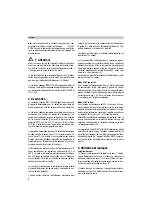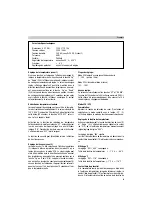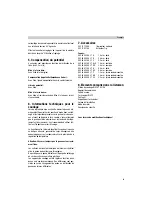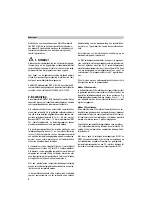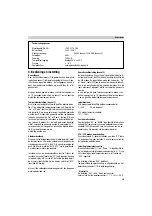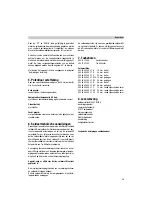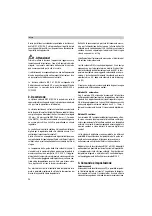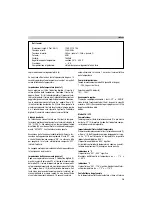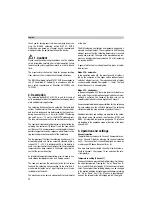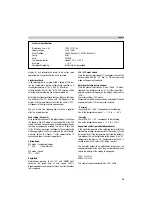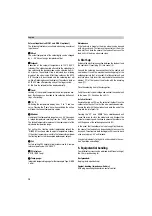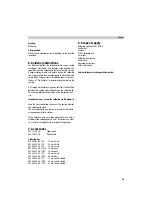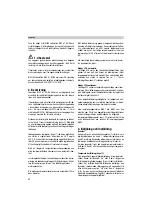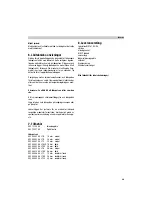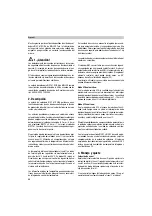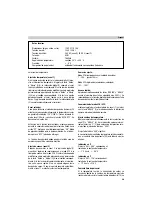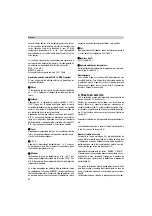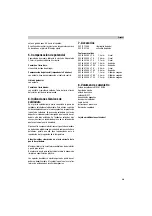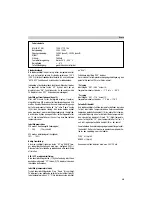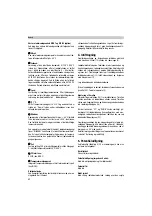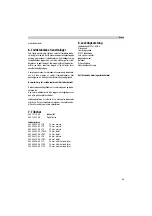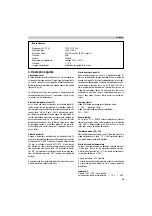
External input device WCB 1 and WCB 2 (optional)
The following functions are available when using an external
input device:
●
Offset:
The actual temperature of the soldering tip can be changed
by + - 40°C by entering a temperature offset
●
Setback:
Reduction of the setpoint temperature to 150°C /300°F
(standby). The setback period, after which the soldering sta-
tion switches to the standby mode, can be adjusted from 0 –
99 minutes. The setback state is indicated by a blinking
display of the actual value. After three setbacks, the AUTO
OFF function will be activated and the soldering tool will
switch off (blinking dash on the display). The setback state or
AUTO OFF ends after pressing a key or the finger switch.
At this time the setpoint will be displayed briefly.
●
Lock:
Locking of the setpoint temperature and temperature win-
dow. No changes can be made to the soldering station set-
tings after locking.
●
°C / °F:
Switching the temperature display from °C to °F and vice
versa. Pressing the ”Down” key when switching the unit on
will show the current temperature version.
●
Window:
Limitation of the temperature range to max. ±99 °C based on
a locked temperature resulting from the ”LOCK” function.
The locked temperature represents the median point of the
adjustable temperature range.
For units with a floating contact (optocoupler output) the
”WINDOW” function is used to adjust a temperature window.
If the actual temperature is within the temperature window
the floating contact will be enabled (optocoupler output).
●
Cal:
Factory setting FSE (reset of all adjusted values to 0, tempe-
rature setpoint value: 350°C/660°F
●
PC interface:
RS232 (WCB 2 only)
●
Temp.gauge:
Integrated temperature gauge for thermocouple Type K (WCB
2 only)
Maintenance
If the feed rate is irregular, the drive wheel can be cleaned
with a brass brush. First remove the control unit from the
feed unit. Push back the cover of the feed unit to access the
feed unit. Lift the drive wheel and clean.
4. Start-up
Establish the electrical connection between the feed unit and
the control unit. Insert plug (12) into socket (6).
Connect the soldering iron connections to the control unit
and feed unit. Insert the electrical connecting plug for the
soldering iron into the 7-pin socket (9) of the control unit, and
lock into place. Fully insert the wire lead into the connection
element (13) of the feed unit and fasten with the clamping
screw (17).
Place the soldering iron in the storage tray.
Verify the correct system voltage and connect the control unit
to the mains (14). Switch on the unit (1).
I
nstall solder roll.
Remove knurled nut (19) on the solder roll holder. Place the
solder roll on the shaft so that the wire unrolls downwards.
Secure the roll with the knurled nut and push the end of the
wire into the inlet port (18).
Pressing the ”UP” and ”DOWN” keys simultaneously will
cause the drive to catch the solder wire and transport the
wire at maximum speed. Continue to advance the solder wire
until it appears at the soldering iron nozzle (22).
In the event that the solder wire is not caught by the drive,
the cover of the feed unit can be pushed back to access the
drive unit. Therefore turn both locking pins (10) counter clock
wise (ccw) approx. 90° until release.
Carry out adjustments to the units as described in the sec-
tion ”Operation and settings”.
5. Equipotential bonding
Four different versions can be obtained by different wiring of
the 3.5mm jack bushing (8).
Hart grounded:
No plug (state upon delivery)
Equipot. bonding (impedance: 0 ohms):
With plug, equalizing conductor on central contact
19
English
Summary of Contents for WSF 81 D5
Page 92: ...83 Circuit Diagram ...
Page 93: ...84 Explo Drawing WSF ...

